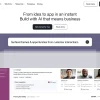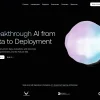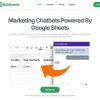Call Support
Email Address
AI Models
As a cutting-edge AI research and development company, OpenAI has been at the forefront of pushing the boundaries of what machines can learn and achieve. This tutorial aims to provide a comprehensive overview of OpenAI, its mission, key products, applications, and how you can leverage these tools to enhance your AI capabilities.
1. GPT (Generative Pre-trained Transformer)
One of OpenAI’s most well-known contributions is the GPT series of language models. From GPT-3 to its later iterations, these models have revolutionized natural language processing. GPT models are trained on vast datasets, enabling them to generate coherent, contextually relevant text. Applications range from chatbots and content creation to code generation and more.- Use Cases: Content writing, chatbots, code assistants, language translation, and sentiment analysis.
- Benefits: Increased efficiency, creativity, and scalability in language-related tasks.
2. DALL-E
DALL-E represents a groundbreaking advancement in AI-generated imagery. Trained on millions of images and their captions, DALL-E can create realistic and often surreal images based on textual prompts. This technology opens up new avenues for design, creativity, and communication.- Use Cases: Art creation, design mockups, visual storytelling, and entertainment.
- Benefits: Accelerated design processes, expanded creative possibilities, and enhanced visual communication.
3. Copia
Copia is OpenAI’s experimental document understanding model. It excels at extracting and summarizing information from documents, making it invaluable for tasks like data extraction, knowledge management, and document review.- Use Cases: Legal document review, academic research, and business intelligence.
- Benefits: Improved efficiency in handling large volumes of documents, enhanced data accuracy, and faster decision-making.
4. WebGPT
WebGPT extends the capabilities of GPT models to the web, enabling them to interact with and understand web pages. This technology holds promise for search engines, recommendation systems, and personalized web experiences.- Use Cases: Search engine optimization, personalized content recommendation, and web automation.
- Benefits: More relevant and personalized user experiences, increased web accessibility, and enhanced data integration.
Add to favorites
Report abuse
Report abuse
Your report has been sent to the administrator.
Featured listings
{{ props.swiper.activeIndex + 1 }} / 6
More from this user
You may also like...

AI Tools Directory
Copyright © 2025 CogAINav.com. All rights reserved.



























